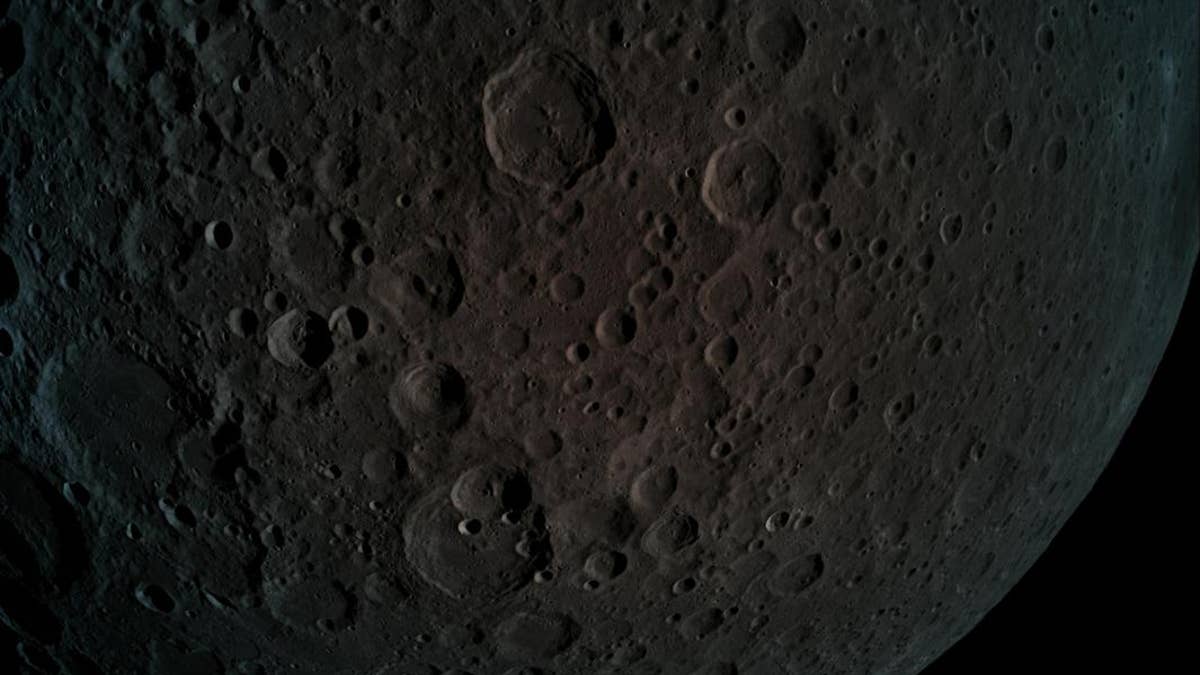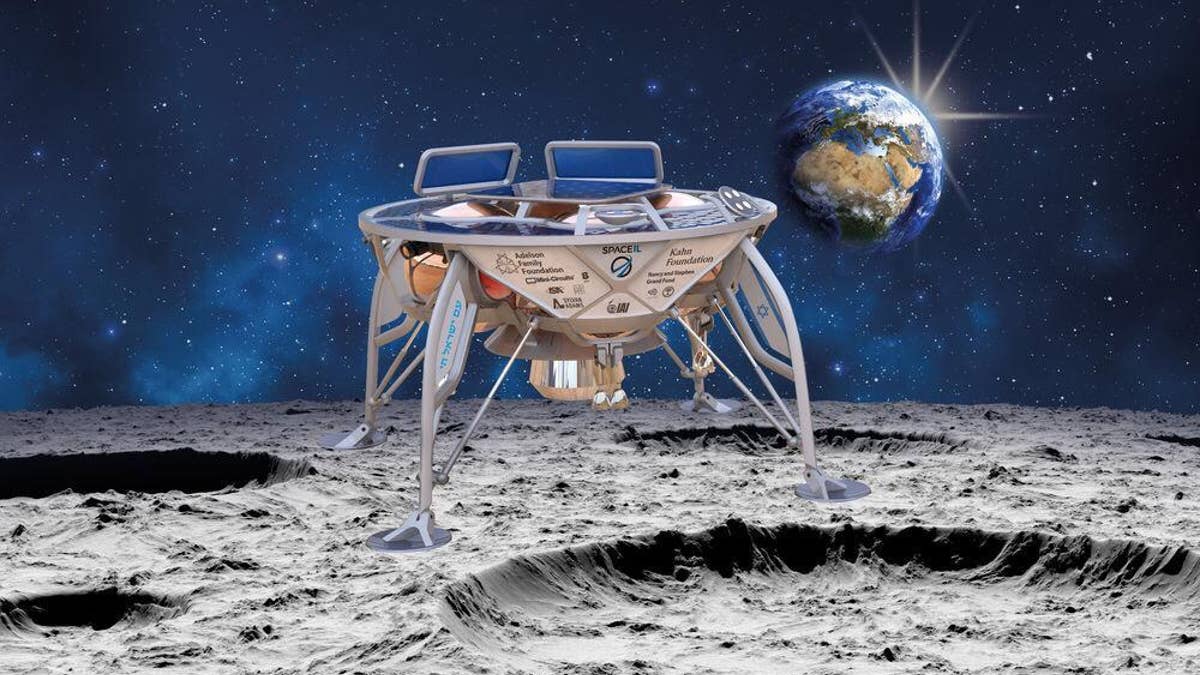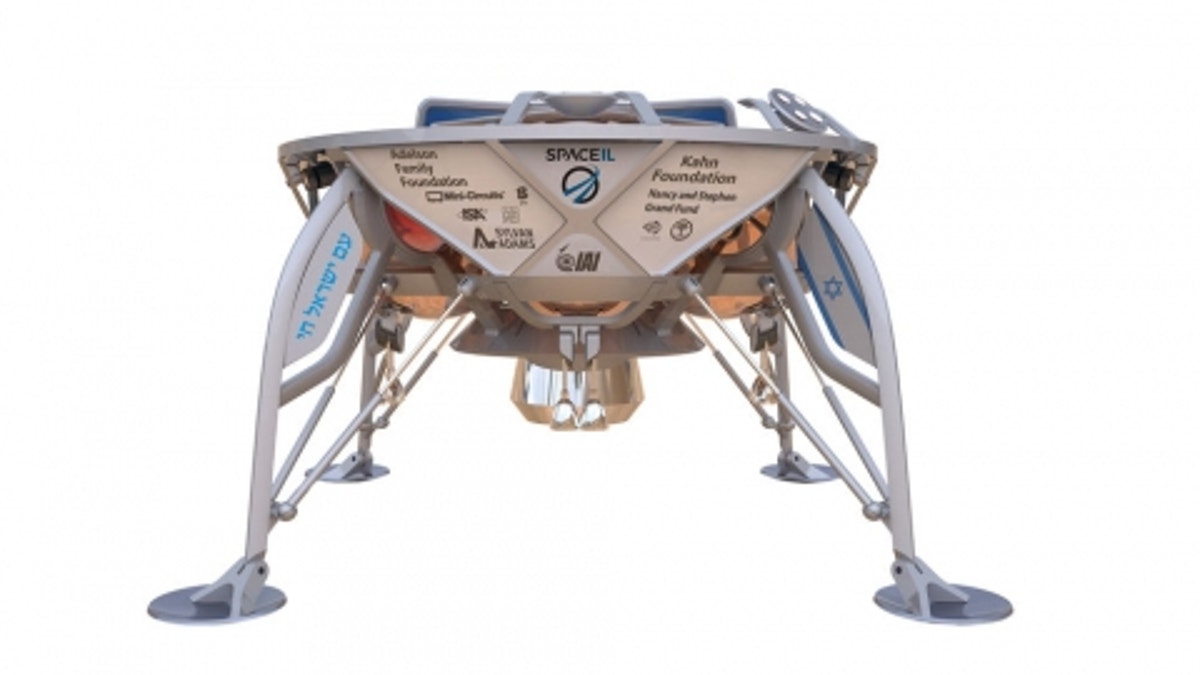
A picture of the far side of the moon with Earth in the background. (Photo credit: Eliran Avital)
Israel’s Beresheet spacecraft has captured its first images of the far side of the Moon ahead of the probe’s historic lunar landing later this month.
The spacecraft entered lunar orbit Thursday, capturing the dramatic pictures of Earth’s natural satellite. Beresheet is expected to reach the lunar surface around 4 p.m. ET on April 11.
The unmanned spacecraft will take Israel into a select group of nations. Only three countries – the U.S., the Soviet Union and China – have made successful ‘soft landings’ on the lunar surface.
ISRAELI SPACECRAFT SNAPS STUNNING SELFIE ON ITS WAY TO THE MOON
The spacecraft was launched from Cape Canaveral Air Force Station atop a SpaceX Falcon 9 rocket on Feb. 21.

A picture taken by Beresheet - the far side of the moon during a maneuver at a height of 292 miles from the moon. (Photo credit: Eliran Avital)
The landing also will be the first private mission to reach the Moon. Beresheet, which is the Hebrew word for “beginning,” was developed by the Israeli nonprofit SpaceIL and the state-owned Israel Aerospace Industries.
During the coming week, SpaceIL and Israel Aerospace Industries will conduct a series of intense maneuvers with Beresheet in preparation for the landing, according to a statement released Friday.
'WONDER, AWE, EXCITEMENT': APOLLO 16 ASTRONAUT DESCRIBES WALKING ON THE MOON
Beresheet was born out of the Google Lunar XPRIZE competition to land an unmanned probe on the moon. The $30 million competition was scrapped with no winner last year after the organizers said none of the five finalists would make the March 31, 2018 deadline for a Moon launch, Space.com reports.

An artist's impression of the Beresheet spacecraft on the lunar surface. (SpaceIL)
Nonetheless, the Israeli team pressed on with the development of its 397-pound spacecraft.
The probe will land within Mare Serenitatis in the Moon’s northern hemisphere. SpaceIL notes that the site has magnetic anomalies, enabling Beresheet’s magnetometer device to take measurements as part of a scientific experiment. Data from the magnetometer, which was developed with Israel’s Weizmann Institute of Science, will be shared with NASA.

A rendering of Beresheet conducting its scientific mission to measure the Moon's magnetic field. (SpaceIL)
In addition to its science mission, Beresheet is also taking a time capsule to the Moon. Consisting of three disks, the time capsule data includes symbols such as the Israeli flag and the country’s national anthem, “Hatikvah.” Dictionaries in 27 languages are also on the disks, along with the Bible and a children’s book inspired by the mission.
Beresheet and its time capsule will remain on the lunar surface indefinitely.
China became the first country to successfully land a probe on the far side of the Moon when the Chang’e 4 lander reached the lunar surface on Jan. 2.
'THERE WAS A BIT OF TENSION': ASTRONAUT DESCRIBES WATCHING MOON LANDING WITH BUZZ ALDRIN’S FAMILY
The U.S. is the only country to place astronauts on the Moon, having done so most recently in December 1972 during the Apollo 17 mission. Only 12 men have set foot on the Moon.

This March 3, 2019 photo made available by SpaceIL and Israel Aerospace Industries on March 5 shows the Beresheet spacecraft with the Earth in the background. (SpaceIL, Israel Aerospace Industries via AP)
July 20, 2019, marks the 50th anniversary of the historic Apollo 11 Moon landing and lunar missions continue to be a source of fascination.
A checklist that traveled to the surface of the Moon with Neil Armstrong and Buzz Aldrin recently sold at auction in New York for $62,500. In the same auction, three tiny Moon rocks brought back from space by the unmanned Soviet Luna-16 mission were sold for $855,000.
CLICK HERE TO GET THE FOX NEWS APP
Dec. 21, 2018 also marked the 50th anniversary of the momentous Apollo 8 launch. During a series of historic lunar orbits, NASA astronauts Frank Borman, Jim Lovell and Bill Anders became the first humans to see the far side of the Moon.
The Associated Press contributed to this article. Follow James Rogers on Twitter @jamesjrogers
